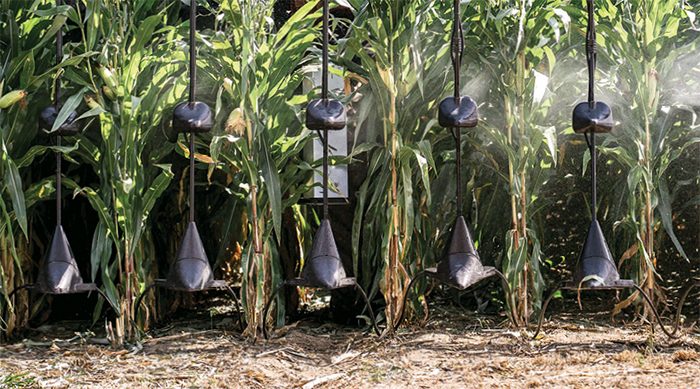Photo Above Courtesy of 360 Yield Center
Proper placement of seeds in the soil is considered by many to be the single most critical step in producing high yielding row crops. This is because success with planting operations sets the stage for everything that takes place with the crop afterward.
Assuming this is correct, it stands to reason that nurturing those seeds and the plants they produce ranks as a strong second in importance to planting and seeding in the crop production cycle. As a result, ag application technologies — particularly spraying and spreading — are getting more than their fair share of scrutiny these days from farmers, equipment manufacturers and researchers alike.
While the bottom line goal with the application of inputs is, and always has been, to get nutrients and pesticides to the plant when they need them most, today, minimizing their overall use is receiving equal, if not more, emphasis. Besides the agronomic effectiveness of crop inputs, today’s application technologies must also take into account cost of inputs vs. yield, as well as the impact overuse of agricultural fertilizers and chemicals have on the environment.
If there was ever a time in the past decade when farmers need to find ways to reduce costs, it’s in the current environment of low commodity prices and escalating expenses. On Aug. 5, USDA released its annual “Farm Production Expenditures” summary for 2015. It estimates that combined crop inputs — chemicals, fertilizers and seed — were $52.8 billion, which accounted for 29.3% of crop farms’ total expenses.
At the same time, U.S. farm sector profitability is forecast to decline for the third straight year in 2016. According to USDA, if realized, 2016 net farm income would be the lowest since 2002 — in both real and nominal terms — and a drop of 56% from its recent high of $123.3 billion in 2013.
As a first step, growers have already severely limited their capital expenditures, as evidenced by the decline in equipment purchases since 2014. Unfortunately, putting off the purchase of inputs is out of the question, but minimizing their use without sacrificing crop yields, while challenging, holds solid potential for reducing crop production costs.
This report examines many of the reasons why reducing ag input costs is essential to helping growers improve profitability. It also stresses the use of good basic practices that improve the effectiveness of inputs, while minimizing the amount applied. Finally, many of the new technologies and methods of applying fertilizers and pesticides, both foliar and soil applications, are covered via discussions with growers, dealers, university researchers and equipment manufacturers.
One of the aspects of applying fertilizers and chemicals that has received an increasing amount attention in recent years involves their effect on the environment. Surface water issues that range from algal blooms to hypoxia are often attributed to agricultural runoff. While not covered as a stand-alone issue in this report, it is recognized that minimizing the volume of ag inputs may help reduce any potential environmental effects. These issues are covered in various sections throughout the larger report.
Special Report Table of Contents
Can Application Technologies Reduce Ag Input Costs?
Three years of low grain prices are forcing farmers to minimize production costs. Developments in how they apply inputs will be an important part of growers’ cost cutting.
Making a Case for Curbing Spending on Inputs
Few signs point to a recovery in crop prices in the near term, which is making it imperative growers find ways to hold down costs.
What’s Trending in Ag Application Technology?
Developments in applying crop nutrients and pesticides have come fast and furious during the last decade. Many of the newest breakthroughs are aimed at ‘site-specific’ management of inputs, nozzles and individual nozzle control, and soil applications.






